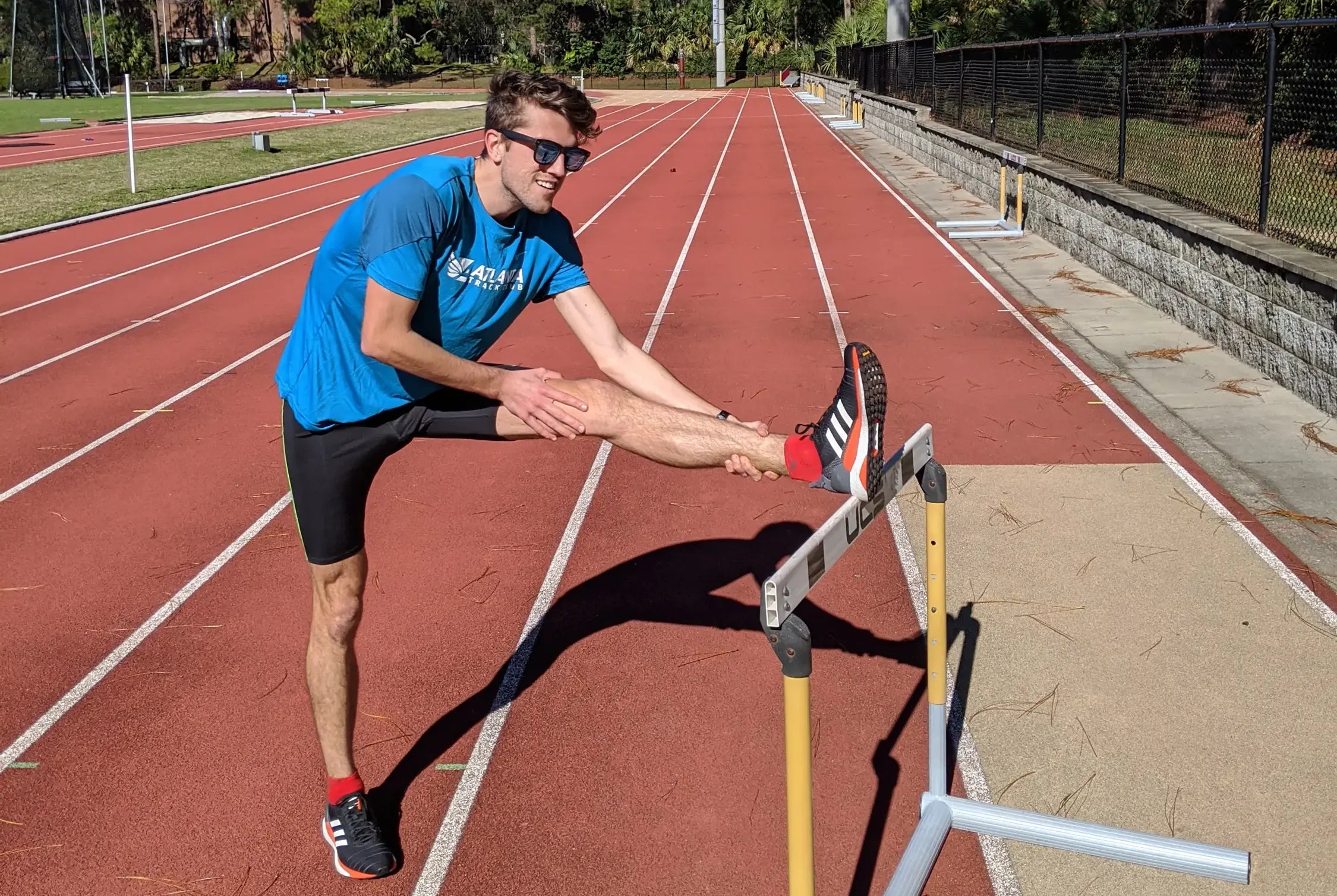Running is a repetitive motion. Every stride puts stress on muscles, joints, and connective tissues. Without flexibility and mobility, this repetitive stress builds up, leading to stiffness, inefficient movement, and eventually injuries. Stretching and mobility are the tools that keep the body balanced, resilient, and ready to perform.
Stretching vs. Mobility — What’s the Difference?
Stretching: Lengthens muscles and improves flexibility (range of motion of a muscle).
Mobility: Improves how joints move through their full range of motion, combining flexibility, strength, and control.
Both are needed for runners: stretching reduces tightness, while mobility ensures fluid, efficient movement.
Dynamic Stretching (Before Running)
Dynamic stretches prepare muscles and joints for movement, increasing blood flow and activating the nervous system.
Examples (5–10 minutes before a run):
- Leg Swings: Forward/backward and side-to-side to open hips.
- High Knees: Activates hip flexors and warms up core.
- Butt Kicks: Prepares hamstrings and promotes quick turnover.
- Walking Lunges with Twist: Opens hips, stretches quads, and engages core.
- Skipping Drills (A-skips, B-skips): Build rhythm, coordination, and mobility.
Dynamic warmups improve running economy and reduce injury risk more than static stretching before exercise.
Static Stretching (After Running)
Static stretches are best after workouts, when muscles are warm. Hold each for 20–30 seconds to release tension.
Examples:
- Hamstring Stretch: Sit or stand, extend one leg, lean forward gently.
- Quadriceps Stretch: Standing, pull one foot toward glutes.
- Calf Stretch: Push against a wall with one leg extended back.
- Hip Flexor Stretch: Lunge position, push hips forward.
- Glute Stretch: Lying on back, cross one ankle over opposite knee, pull leg toward chest.
Static stretching post-run helps reduce stiffness and maintain long-term flexibility.

Mobility Drills (Weekly Focus)
Mobility work strengthens ranges of motion and prevents stiffness.
Examples:
- Hip Circles / 90-90 Rotations: Improve hip mobility, critical for stride efficiency.
- Ankle Mobility (knee-to-wall drill): Improves dorsiflexion, aiding smoother foot strikes.
- Thoracic Spine Rotations: Improves posture and arm swing mechanics.
- Deep Squat Holds: Open hips and strengthen mobility under load.
Limited hip and ankle mobility are linked to inefficient running form and higher injury risk.
Foam Rolling and Myofascial Release
Foam rolling isn’t stretching, but it helps release tight fascia and improves blood flow.
- Roll calves, hamstrings, quads, IT band (gently), and glutes.
- Use 30–60 seconds per muscle group.
Foam rolling improves short-term flexibility and reduces muscle soreness after runs.
Practical Routine for Runners
Before runs: 5–10 minutes dynamic stretching & mobility.
After runs: 5–10 minutes static stretching.
Weekly: 2–3 sessions of mobility drills + foam rolling.

Share:
Injury Prevention in Running
Post-Run Recovery: How to Rebuild and Come Back Stronger?